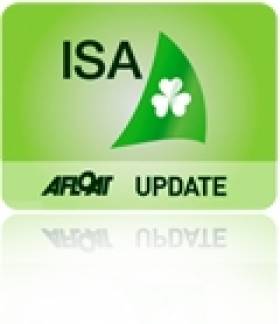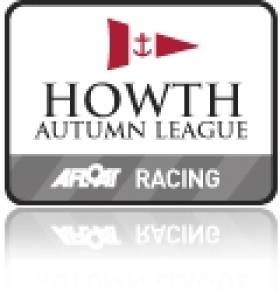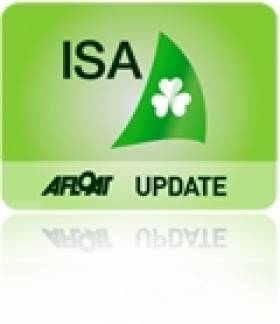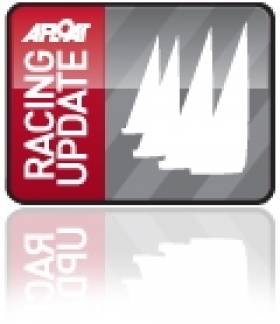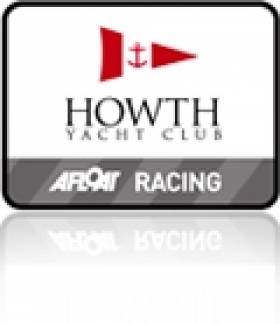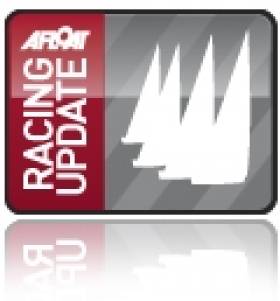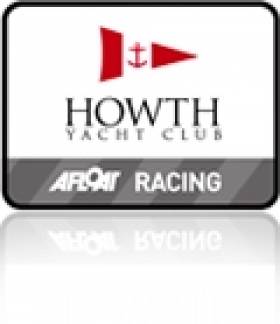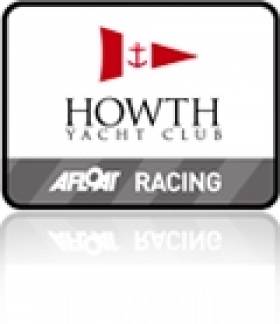Displaying items by tag: Howth Yacht Club
Royal Cork Yacht Club Third in Italian 2K Team Race Event
#2kteamracing – Teams from Howth Yacht Club and the Royal Cork Yacht Club travelled to Porto Ercole, Tuscany for the Italian- Cala Galera leg of the 2014 2K team Racing Circuit, from the 5th to 7th of September. Both teams enjoyed high intensity racing, some very tight matches, exceptional racing conditions, and beautiful scenery.
The Royal Cork team, led by skippers Fred Cudmore and George Kinsgton won 6 of the 9 races in the round robin, over the first and second day of the event. They went into day 3 of the event in second place, and faced the highly experienced 2K racers, Yacht Club Costa Smerelda in the first to two wins semi final. Racing went down to the wire, but unfortunately YCCS won 2-1. The Rebel army won their petit final, against the British Team Magnum, finishing the regatta in 3rd place. YCCS stormed on to beat the Rome Racing Team in the final.
Howth Yacht Club, competing at their first 2K event, had a slow start getting in only two races of their round robin on Friday. With more breeze on day 2, skippers Simon Rattigan and Geoff Tait were more in the groove of the 2 v 2 racing and they went on to win 4 from 7 of their races. On day 3, the team had the best seats in the house to watch the gold fleet finals, from their luxurious changeover yacht. They then took part in the "king of the castle" silver fleet final, and finished the event in 9th place.
The Royal Cork were represented by: Fred Cudmore, Emma Geary, Philip O'Leary, Sarah O'Leary, George Kingston, Ian Mc Namee, Philip Mc Glade, and Eimear O'Leary.
Howth were represented by Simon Rattigan, Aoife English, Ross Mc Donald, Rachel O'Brien, Geoff Tait, Lisa Tait, Rob Kerley and Jess Armstrong.
Full event report and results are available here
Anthony O’Leary Crowned 2014 All Ireland Sailing Champion Off Howth
#allirelandsailing – Royal Cork Sailor Anthony O'Leary is the 2014 ISA All Ireland Sailing Champion beating clubmate Stefan Hyde on count-back following a two day, 12 race battle against 15 other national class champions. The top five in the event were all Cork harbour sailors.
The Crosshaven sailor who brought home the Commodore's Cup to Ireland for a second time in August has competed in the Championship numerous times (including runner–up four times) but had never brought home the coveted Helmsman Trophy.
Sunshine and a breeze of 10-12 knots again awaited the sailors today for the finale of the ISA All Ireland event hosted by Howth Yacht Club. First to take to the waters north of the harbour were the eight sailors competing in the repechage for the remaining two final spots.
Local sailor Conor Turvey and J24 Champion Flor O'Driscoll finished Race 1 at the top of the leader board. O'Driscoll went on to win Race 2, and the repechage, to qualify him for the Final but a penalty for Turvey cost him the remaining place. Ultimately it was consistency that paid off for Clontarf's Pat O'Neill. His 3, 3 earned him the eighth place in the Final.
O'Leary, who is also the 1720 national champion stormed into the lead in Race 1 of the Final and just could not be caught. He rounded each mark in pole position to take the win and push him to the top of the leader board. O'Leary was tailed by Pat O'Neill and RS200 sailor Alex Barry but fellow Corkonian Stefan Hyde's 4th was enough to keep him in 2nd place overall with defending champion Ben Duncan only a point behind in 3rd.
There was a significant shift in the leader board after the second race. Stefan Hyde, Anthony O'Leary and a third Cork sailor; Alex Barry were first to cross the line. This resulted in a Cork takeover of the top four places with overnight leader Ian Nagle rounding off the domination by moving up to 4th. Duncan pulled in his worst result of the championship and even the discard couldn't save him from dropping to 7th overall.
The penultimate race couldn't have been closer. All eight competitors were neck and neck throughout, jostling positions. In a shock result Stefan Hyde finished in last place but he discarded to hold on to the top spot. Alex Barry had his second consecutive bullet followed by Pat O'Neill who finished in 2nd place for the second time in three races. Now only 3.5 points separated the top four sailors in a Cork dominated fleet.
The wind dropped off to about 7 knots for the final deciding race. Again, it was so close that the positions changed frequently. At the first mark, Anthony O'Leary was at the back of the fleet but he then led around the second mark. Alex Barry, who had been 3rd around the first mark, dropped to the back of the fleet rounding the final mark. But O'Leary and his crew Dylan Gannon and Dan O'Grady could feel the win. They maintained their lead, crossed the line two places ahead of Stefan Hyde, tied them on points, and won on count-back in what was undoubtedly the closet fought All Irelands in many years. Hyde and his crew Jerry and Jimmy Dowling who were OCS in the final race ultimately took Silver and Alex Barry, Sandy Rimmington, Lisa Neary and Patrick Good claimed Bronze.
Results
|
Boat |
Helm |
Club |
R1 |
R2 |
R3 |
R4 |
R5 |
R6 |
R7 |
Dis |
Total |
|
2 |
Anthony O'Leary |
RCYC |
1 |
4 |
3 |
1 |
3 |
7 |
1 |
7 |
13 |
|
4 |
Stefan Hyde |
RCYC |
1 |
1 |
2 |
4 |
2 |
8 |
3 |
8 |
13 |
|
8 |
Alex Barry |
MBSC |
4 |
2 |
4 |
3 |
1 |
1 |
8 |
8 |
15 |
|
5 |
Ian Nagle |
RCYC |
1.5 |
1 |
2 |
6 |
6 |
3 |
2 |
6 |
15.5 |
|
1 |
Pat O'Neill |
CY&BC |
5 |
2 |
8 |
2 |
5 |
2 |
4 |
8 |
20 |
|
3 |
Chris Helme |
RSGYC |
3 |
5 |
1 |
8 |
3 |
5 |
6 |
8 |
23 |
|
7 |
Ben Duncan |
2 |
5 |
1 |
5 |
7 |
6 |
7 |
7 |
26 |
|
|
6 |
Flor O'Driscoll |
RSGYC |
6 |
3 |
6 |
7 |
4 |
4 |
5 |
7 |
28 |
Royal Cork Sailors Top the Leaderboard at Howth's All Ireland Sailing Championships
#allirelandsailing – Royal Cork sailors lead the way into tomorrow's All Ireland Sailing Championship final at Howth Yacht Club. RCYC's Ian Nagle and Stefan Hyde topped their respective flights after six preliminary races in near perfect 12–northerly winds. Full results from both flights are below.
Another Royal Cork helm, Commodore's Cup champion Anthony O'Leary, was first to get a win this morning, closely followed in Race 1 by defending champion Ben Duncan and Northern Irish Squib Champion Ross Vaughan. A technical problem with Ian Nagle's J80 keelboat meant he was unable to finish the race. His score would be awarded based on his average for the next two races - something that would later yield a dramatic change of the leader board.
Race two returned some interesting results with the initial top competitors all finishing back mid-fleet. Ben Duncan took the final bullet in Race 3 but a 1, 2 from Nagle gave him an average of 1.5 and total of 4.5 points to pip Duncan to the top spot. O'Leary, tied on points with Duncan but losing on count-back, earned the final guaranteed place in the Final. Ross Vaughan, Pat O'Neill, Flor O'Driscoll and Conor Turvey must now sail in the repechage in the hopes of progressing.
In Flight 2 former All Ireland Champion Stefan Hyde from Royal Cork stormed into the lead, winning the first two races. A 2nd in Race 3 gave him a total of 4 points putting him straight through to the Final in overall pole position. Chris Helme from the Royal St George and Alex Barry from Monkstown Bay Sailing Club finished 2nd and 3rd respectively. Joining the Flight 1 sailors in the repechage will be Richard Evans, Conor Phelan, Laurence Hanley and Guy Kilroy.
There are two races planned for the repechage tomorrow with racing scheduled to get underway at 10.15am. Only the top two teams will be given the opportunity to compete against the top six sailors in the Final. Flight results from today will carry forward to the four-race Final with a discard being applied after four races. Racing is under the direction of ISA President David Lovegrove.
Flight 1 Results
|
Boat |
Helm |
Club |
R1 |
R2 |
R3 |
Total |
|
6 |
Ian Nagle |
Royal Cork YC |
1.5 |
1 |
2 |
4.5 |
|
5 |
Ben Duncan |
2 |
5 |
1 |
8 |
|
|
8 |
Anthony O'Leary |
Royal Cork YC |
1 |
4 |
3 |
8 |
|
7 |
Ross Vaughan |
Royal North of Ireland YC |
3 |
6 |
4 |
13 |
|
3 |
Pat O'Neill |
Clontarf Y&BC |
5 |
2 |
8 |
15 |
|
2 |
Flor O'Driscoll |
Royal St George YC |
6 |
3 |
6 |
15 |
|
1 |
Conor Turvey |
Howth YC |
4 |
8 |
7 |
19 |
|
4 |
Jonathan O'Rourke |
National YC |
7 |
7 |
5 |
19 |
Flight 2 Results
|
Boat |
Helm |
Club |
R1 |
R2 |
R3 |
Total |
|
2 |
Stefan Hyde |
Royal Cork YC |
1 |
1 |
2 |
4 |
|
6 |
Chris Helme |
Royal St George YC |
3 |
5 |
1 |
9 |
|
1 |
Alex Barry |
Monkstown Bay SC |
4 |
2 |
4 |
10 |
|
7 |
Richard Evans |
Howth YC |
2 |
6 |
5 |
13 |
|
5 |
Conor Phelan |
Royal Cork YC |
6 |
4 |
3 |
13 |
|
8 |
Laurence Hanley |
Lough Ree YC |
5 |
3 |
6 |
14 |
|
4 |
Guy Kilroy |
Royal Irish YC |
7 |
7 |
7 |
21 |
|
3 |
Roy Van Maanen |
Greystones SC |
8 |
8 |
8 |
24 |
Howth Yacht Club Announces New Format & Sponsor for Autumn Sailing League
#hyc – No sooner had Howth Yacht Club successfully staged a new double–handed fixture on the capital's waters this month than the north Dublin Club is back with a further announcement on a new format for the Howth Yacht Club Autumn league. Now opens for entries, MSL Park Motors Mercedes-Benz have announced a three-year sponsorship deal for the League that is celebrating its 35th anniversary in 2014.
With final date for entries of next Wednesday 10th September, entry-forms are arriving steadily with strong demand across all classes. Organisers are predicting a fleet of around 120 boats across in nine divisions starting on Saturday 13th September and ending on 18th October.
Although London 2012 Olympian Annalise Murphy was present for the announcement today (Tuesday 2nd September 2014) the Laser Radial sailor won't be competing in Howth as she will be on the road in her Mercedes Vito Mixto, en route to the ISAF Sailing World Championships in Santander where she hopes to qualify for Rio 2016.
Cruiser classes 1 to 3 will have racing under IRC and ECHO handicaps as will two white sails divisions competing on a separate course between Ireland's Eye and Lambay Island. Meanwhile, Puppeteer 22's, Squibs, Sailfleet J80's and the classic Howth Seventeen footers will have a separate course inshore closer to Howth. Racing begins at 1430 on each racing day.
"Our new three-year association with Howth Yacht Club is a perfect match between a world class sailing club and our North Dublin Mercedes-Benz dealership at MSL Park Motors," commented Brendan Grace, Managing Director at MSL Motor Group. "Sports sponsorship isn't new for us but sailing and Fingal's beautiful coastline makes this event an ideal fit for Mercedes Benz."
And in a new development for the long-running series, racing has been switched from Sunday mornings to Saturday afternoon. "We made the change as we recognise that while competitors enjoy the half-day competition format, they also want to socialise with the other crews and friends after racing ends so Saturday makes better sense," commented Brian Turvey, Commodore of Howth Yacht Club. "The new timing will boost racing and bring the crews ashore in time for a great social programme at the club."
Final List of 'All Ireland Sailing' Invitees Published for Howth Competition
#allirelandsailing – The Irish Sailing Association (ISA) has issued its final list of invitees (see below) for tomorrow's All Ireland sailing championships at Howth Yacht Club together with clarification on how the selection for the competition was conducted.
The explanation follows comment from sailors on this site as to why some of the country's biggest classes, such as the Laser dinghy and Flying Fifteeen keelboat were not invited.
In a statement, the ISA says it gives 'certain discretion' to a steering group in how it operates the selection criteria. It says these are published in the letter to classes requesting their nominations.
The statement continues 'The main operating difference for tomorrow's competition was the request for 2014 National Champions to be nominated and that a place would not be passed to a another sailor. Classes who had not completed a nationals by August 25th could use a ranking list. The objective was to ensure that as many class national champions as possible would get an opportunity to compete in the 2014 championship'.
According to the ISA, the basic rules are:
The class must have their ISA affiliation for 2014 paid in full.The Race Officer at the national championships has to be a National RO, or Regional RO under mentoring by a National RO. This is an ISA Policy from 2005 designed to improve the standard of racing at class championships. For this purposes the ISA recognises the qualification of officials from other national authorities e.g. RYA, FFV as well as ISAF International ROs.The SG are not permitted to select from classes that do not comply with one or other these rules.
All other nominees were considered and the selection process set out in the report was followed. The top three dinghy and keelboat classes based on numbers at their national championships were selected first, that gave six. The remaining classes, dinghy and keelboat together, were then ranked in order of numbers and the next nine selected. Where there were equal numbers a lottery was held to determine the order. The remaining classes were ranked in order for call up, by lottery, if and when a place became available.
Some nominees were unable to accept places due to pre-existing commitments (e.g. family engagements or competition abroad as part of ISA Squads) and the places awarded to other classes in order of the selection. In other cases the nominee was not able to accept a place.
Full text here
2014 ISA All Ireland Invitees
|
Name |
Surname |
Club |
Class |
|
|
Alex |
Barry |
Monkstown Bay SC |
RS400 |
National Champion |
|
Ben |
Duncan |
Defending Champion |
Champion 2013 |
|
|
Richard |
Evans |
Howth YC |
ICRA 2' |
National Champion |
|
Laurence |
Hanley |
Lough Ree YC |
Shannon OD |
National Champion |
|
Chris |
Helme |
Royal St George YC |
Ruffian |
National Champion |
|
Stefan |
Hyde |
Royal Cork YC |
SB20 |
National Champion |
|
Guy |
Kilroy |
Royal Irish YC |
Water Wag* |
National Champion |
|
Ian |
Nagle |
Royal Cork YC |
ICRA '1' |
National Champion |
|
Flor |
O'Driscoll |
Royal St George YC |
J24* |
Ranking Champion |
|
Anthony |
O'Leary |
Royal Cork YC |
Commodores Cup & 1720 |
National Champion |
|
Pat |
O'Neill |
Clontarf Y&BC |
IDRA 14 & E-Boat |
Double National Champion |
|
Jonathan |
O'Rourke |
National YC |
Mermaid |
National Champion |
|
Conor |
Phelan |
Royal Cork YC |
ICRA '0' |
National Champion |
|
Conor |
Turvey |
Howth YC |
Howth 17 Footer |
National Champion |
|
Roy |
Van Maanen |
Greystones SC |
RS200 |
National Champion |
|
Ross |
Vaughan |
Royal North YC |
Squib |
National Champion |
#allirelandsailing – 16 national sailing class champions have been invited to compete at the Howth Yacht Club hosted All Ireland Sailing Championships on the 6th and 7th of September. The championship, which began in 1947, will be sailed in the ISA's fleet of J80 keelboats where some of the nation's top sailors will battle it out for the coveted Helmsman's Trophy. Scroll down for invitee list.
From its invite list published yesterday the Irish Sailing Association (ISA) has opted not to invite some of the strongest Irish dinghy and one design keelboat classes. For example there is no Flying fifteen invite despite a proud showing of 29–boats for its championships on Strangford Lough last weekend. Neither is there an invitation (invitation list below) for the Laser, Fireball, Dragon, National 18 or Puppeteer classes. Nor are there invitations extended to the Olympic squad such as Annalise Murphy, winner of the women's Moth World Championships.
Mirror, Topper and 420 class invitees are also missing from the list but these may yet appear on the Junior Helmsmans invitee list as these classes are mainly sailed by youth sailors in Ireland.
Among the invited competitors is recent Commodore's Cup winner and 1720 national champion Anthony O'Leary. O'Leary has competed at the All Irelands numerous times and although sons Peter and Nicholas have won the championship a combined five times, Anthony himself has yet to bring the title back to Cork. There are three Cruiser Racer invitees for ICRA division winners.
Defending All Ireland Sailing Champion Ben Duncan will face some stiff competition next week as he fights to retain his title. Earning a nomination from the GP14 class is Olympic veteran Ger Owens who competed at the Games in Athens, Beijing and most recently in London. Owens is no stranger to the ISA championship having won it in 2000. He will also line up against the 2007 victor Stefan Hyde.
The 16 boats will compete in two fleets of eight on Saturday, each scheduled for three races.
From there the top three boats from each fleet will progress to Sunday's final four-race series with two additional places remaining for the top two boats from a two-race repechage on Sunday morning.
2014 invites
|
Name |
Surname |
Club |
Class |
|
Alex |
Barry |
Monkstown Bay Sailing Club |
RS400 |
|
Ben |
Duncan |
Defending Champion |
|
|
Richard |
Evans |
Howth Yacht Club |
ICRA 2' |
|
Laurence |
Hanley |
Lough Ree Yacht Club |
Shannon One Design |
|
Chris |
Helme |
Royal St George Yacht Club |
Ruffian |
|
Stefan |
Hyde |
Royal Cork Yacht Club |
SB20 |
|
Ian |
Nagle |
Royal Cork Yacht Club |
ICRA '1' |
|
Flor |
O'Driscoll |
Royal St George Yacht Club |
J24 |
|
Anthony |
O'Leary |
Royal Cork Yacht Club |
Commodores Cup & 1720 |
|
Pat |
O'Neill |
Clontarf Yacht & Boat Club |
IDRA14 & E-Boat |
|
Jonathan |
O'Rourke |
National Yacht Club |
Mermaid |
|
Ger |
Owens |
Royal St George Yacht Club |
GP14 |
|
Conor |
Phelan |
Royal Cork Yacht Club |
ICRA '0' |
|
Conor |
Turvey |
Howth Yacht Club |
Howth 17 Footer |
|
Roy |
Van Maanen |
Greystones Sailing Club |
RS200 |
|
Ross |
Vaughan |
Royal North of Ireland Yacht Club |
Squib
|
Howth Yacht Club's Double–Hander On Target for Little & Large Boats
#hyc – The new one-day Howth YC Double-Hander, with sponsorship from Aqua Restaurant and shaping its course round the islands and rocks of Fingal plus the Kish Lighthouse, struck a successful chord for its inauguration yesterday (Saturday August 23rd). Brainchild of Simon Knowles, who discovered his enthusiasm for double-handed challenges in last year's Dun Laoghaire-Dingle Race, it got off to a fine inauguration with 33 starters writes W M Nixon.
A fleet which had been comfortably on the 22 mark at mid-week surged on the day to these 33 boats, most of them from the host club, and ranging in size from Roy Dickson's Corby 25 Rosie and Vincent Gaffney's Laser 28 Alliance II up to craft like Stephen's Harris's First 40.7 Tiger and Stephen O'Flaherty's Spirit 54 Soufriere.
They were divided into Spinnaker and White Sail, with each division having both IRC and the Howth variant on the ECHO handicap. With the morning's crisp and sunny nor'west breeze forecast to fade as the day went on, and with a big tide hitting High Water an hour and a half after the 1000hrs start, it was reckoned the best option was north to Lambay and then southeast to the Kish, which would allow for the new flood in late afternoon to bring in stragglers to finish where they'd started, at the old HYC line on Howth's East Pier.
It was a reaching start, which seems to be the best option with double-handed events, and the non-spinnaker division first away saw Stephen Harris read it to perfection with Tiger. By the time they were shaping their course up the east side of Ireland's Eye the dark blue First 40.7 was well out on her own.
Things were closer in the more numerous spinnaker division, with David Kelly in the J109 Storm, Ross McDonald in the X332 Equinox, Jonny Swann in the classic Humphreys Half Tonner Harmony, and Ian Dickson in Rosie hitting the line together at the front of the fleet, with Equinox getting the best of it to be first around the turning mark.
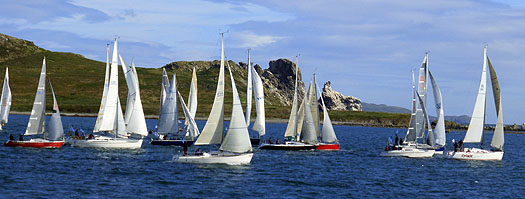
A reaching start is the preferred option for Double-Handed events. In the spinnaker division, Storm, Equinox, Alliance II and Rosie have the best of it. Photo: W M Nixon
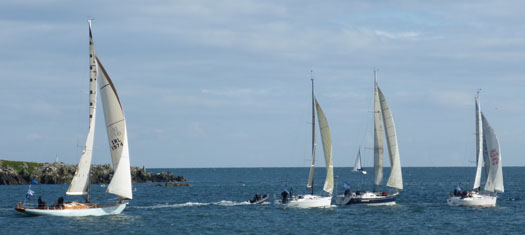
Stately and conservative perhaps, Soufriere plays it safe at the start, but very soon was milling her way past the fleet. Photo: W M Nixon
However, the queen of the fleet Soufriere was not only looking very well in the morning sunshine, but after an understandably conservative start, Stephen O'Flaherty and David Cagney wound the big girl up, and in conditions made for her, she marched through the fleet on the long leg to Lambay, and then consolidated her lead on the even longer run down to the Kish in the sluicing ebb.
But the zing was going out of the wind, and by the time the tailenders got to the Kish it had evaporated altogether - some reported being becalmed for nearly an hour before a faint new breeze began to make in from the east. Soufriere meanwhile was still on the pace closing in towards the Nose of Howth, her crew working so hard you couldn't help but think that it would be more fair if boats in these short-handed events were allowed to carry a percentage of their racing crew – something like 33% would be more equitable - instead of everyone racing with just two regardless of boat size.

Nearly there.....Soufriere gets close to the finish in the very last of the original breeze. Photo: W M Nixon
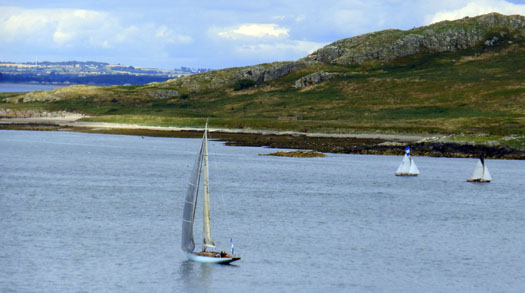
With the last of the ebb still against her, Soufriere has stopped very near the line, even though the two Howth 17s are still finding breeze close in to Ireland's Eye. Photo: W M Nixon
Be that as it may, Soufriere nearly made it, but the wind gasped its last within less than half a mile of the finish. Eventually, she got across in a little local zephyr from the southwest at 15.10.02, which was good going for the day that was now in it, and it looked better and better as the boats still at sea weren't getting anywhere much.
However, the new easterly sharpened just that tiny bit, and the Swann/Freyne team on Harmony were perfectly placed to take full advantage of it, heading steadily for the finish under spinnaker ahead of some much larger boats, and with the other classic Half Tonner, Dave Cullen's King One, somewhat out of it fifteen minutes astern.

Trickling in to the finish with the new easterly breeze are Colm Bermingham's Bite the Bullet. David Kelly's Storm tacking to lee northward, and Stephen Harris's Tiger leading the non-spinnaker class. Photo: W M Nixon
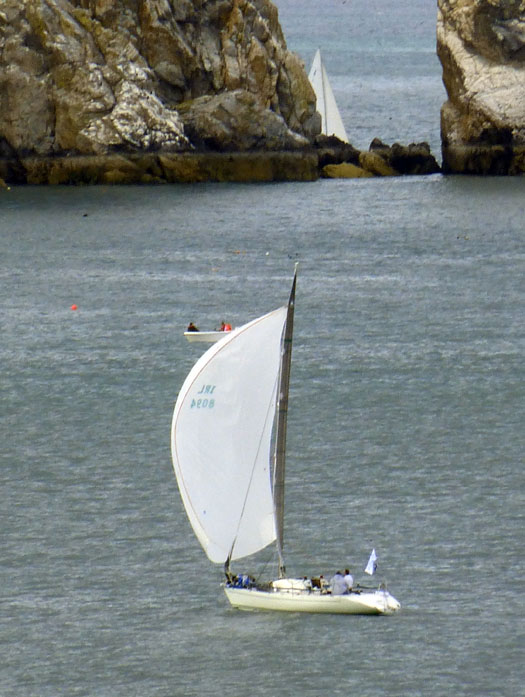 Dave Cullen's classic Half Tonner King One is going well in the easterly nearing the line, but Harmony is already finished. Photo: W M Nixon
Dave Cullen's classic Half Tonner King One is going well in the easterly nearing the line, but Harmony is already finished. Photo: W M Nixon
Harmony was in just before 4.0pm, correcting to five minutes ahead of Soufriere which nevertheless stayed in second three minutes ahead of Equinox, with Demot Skehan's MG34 Tough Nut taking fourth ahead of King One in fifth.
In the non-spinnaker class, Tiger had sailed a wellnigh faultless race, but the chips just didn't fall her way, and though she took line honours, across both handicap system the most consistent performer was Jennie O'Leary with the First 33.7 Tantrum 3, as she won under IRC and was second in the Howth/ECHO division, where Joe Carton, sailing with Mossy Shanahan in the Dehler 34 Voyager, took the honours and they also took third in IRC, the other boat in the top three in the non-spinnaker division being the McAllisters from Malahide with Force Five.
The buzz throughout this new Howth event makes a repeat next year highly likely. Indeed, the third Saturday of August 2015 is already being suggested as the logical day, as the timing of this year's event seemed to hit the spot both for regular crews, and for former shipmates to getting together to give it their best shot for a very manageable one-day reunion challenge.
Meanwhile there's no doubt but it was the weekend for women sailors at Howth. Jennie O'Leary was setting the pace in the Aqua Double-Hander, at the same time HYC were hosting the Shipman 28 Nationals and the winner was Gusto sailed by Christine Heath of Royal St George YC, and the venerable Howth 17s were also having their annual Ladies Race, where the winner was Rachel Cronin sailing Deilginis. Ironically, Rachel and her husband Paddy have just sold their own Howth 17 Gladys after many years of ownership in which they won dozens of prizes but never the Ladies Race, but Rachel has done it now, helming for the lads in Deilginis.
Howth Teams Place In Top 10 At Dennis Conner Yacht Club Challenge
#DennisConner - Howth Yacht Club took two places in the final top 10 at the sixth Dennis Conner International Yacht Club Challenge in New York City last weekend, where the honours went to South Africa's Royal Cape Yacht Club.
HYC's Team 1 made a very respectable fifth place on 43 points – only five points off the third-place Swiss squad – while Team 2 placed 10th on 67 points.
As previously reported on Afloat.ie, Howth's two teams for the event were the U25s skippered by Joseph Murphy (with Gordon Stirling, Cillian Dickson, Harry Cronin and Cian Manly) and HYC Red skippered by Simon Rattigan (Rob Kerley, Luke Malcolm, Harry O'Reilly and Sam O'Byrne).
They were among 19 amateur club teams racing in New York Harbour on boats borrowed from the Manhattan Yacht Club, sailing out of the North Cove marina at Battery Park on the southern tip of the borough.
Howth Yacht Club Double Hander Race Attracts Stellar Entry
#hyc – A solid entry list of 22 boats and counting has built up for this Saturday's inaugural double-hander at Howth Yacht Club, the brainchild of noted helmsman Simon Knowles. He so enjoyed racing two-handed in the Dun Laoghaire to Dingle last year with clubmate Colm Buckley on the Elan 333 Blue Eyes that he got to thinking how the concept might be transferred to a long day race from their home club writes W M Nixon.
The Race Report is published HERE
With sponsorship from Aqua Restaurant, which most appropriately is located at the end of Howth's West Pier in the former yacht club building, the new race has many traditional overtones, with the start at 1000 hrs being from the time-honoured shore line on the East Pier.
As for the course, it will be set on the morning of the race, and could be as long as 40 miles using the Kish, Lambay and Rockabill as turning marks. The idea has certainly rung a bell with people jaded by today's round-the-cans racing with full crews, as the entry list as of Wednesday ranges in size from Stephen O'Flaherty's Spirit 54 Soufriere at the top of the fleet, down to the smallest boat so far entered, Roy Dickson's Corby 25 Rosie.
Simon Knowles himself will be racing again aboard Blue Eyes with Colm Buckley, though as a noted Etchells 22 helm, he reckons an Etchells might make for a good outside bet in this kind of challenge. Other noted skippers down-sizing their crew include Ross McDonald with the X332 Equinox, and David Kelly of Rush with the J/109 Storm.
Having a biggish boat doesn't seem to have discouraged several entries, as Stephen Harris is in the list with the First 40.7 Tiger, while Fred McCollum is also going with the Oyster 485 Arctic Fox. Another contender of special interest is former HYC Commodore Roger Cagney with the Hanse 37 Hansebacker, better known as a fast cruiser, while the pure racing side is also well represented with craft of the calibre of Dave Cullen's top Half Tonner King One. In all, it's an eclectic entry list, and the outcome should be neatly in place before the weather deteriorates as forecast on Sunday.

The new Aqua Double-Hander at Howth may be as much as 40 miles long making turning marks of the rocks, lighthouses and islands off the Fingal coast and Dublin Bay.
Cove Sailing Club Yacht Wins Quarter Ton Cup At Howth Champs
#hyc – Top performing Cork Quarter tonner, Dom Losty's 'Illes Pitiuses' has won the seven boat Irish Quarter Ton Championships at Howth Yacht Club. High winds in Howth yesterday meant that the final day's racing in the Euro Car Parks East Coast Championships and Quarter Ton Cup was cancelled and the positions after Saturday's exciting 3 races stood as final results.
This well attended event offered the many competitors and visitors from all around the country excellent and highly competitive racing.
The Class 3 racing was dominated by the J24s including 'J Guevara', 'Scandal' and IRC and ECHO winner 'Hard on Port' skippered by Flor O'Driscoll.
Howth's Anthony Gore Grimes and his crew on 'Dux' beat Paddy Kyne's 'Maximus' by just one point in Class 2 but 'Maximus' won the ECHO prize.
The Team Trophy was won by the Class 3 entries: Hard on Port, Tiger Nathan Kirwan Trust and Anchor Challenge.
At the prize giving, event organiser Eddie Bourke thanked the race management team for their skill in managing Saturday's racing, as well as Euro Car Parks for their generous sponsorship and remarked on the terrific number of entries in what was a very successful event for the Class 2, Class 3 and Quarter Ton boats.
Full results here.



























